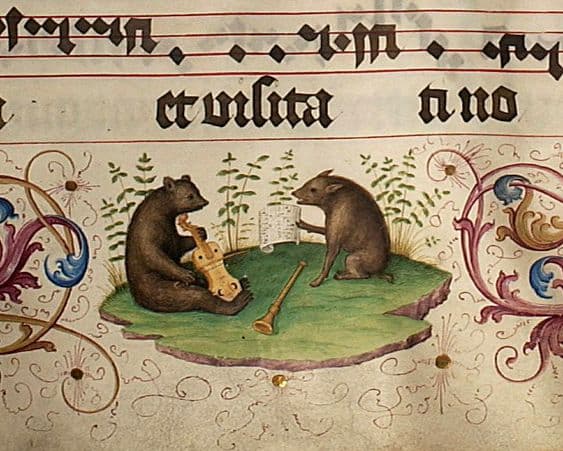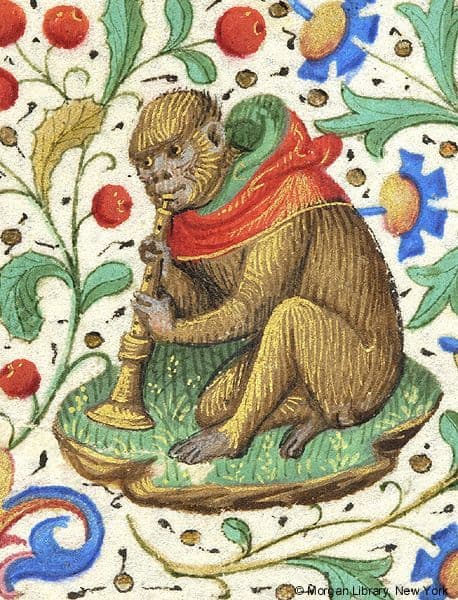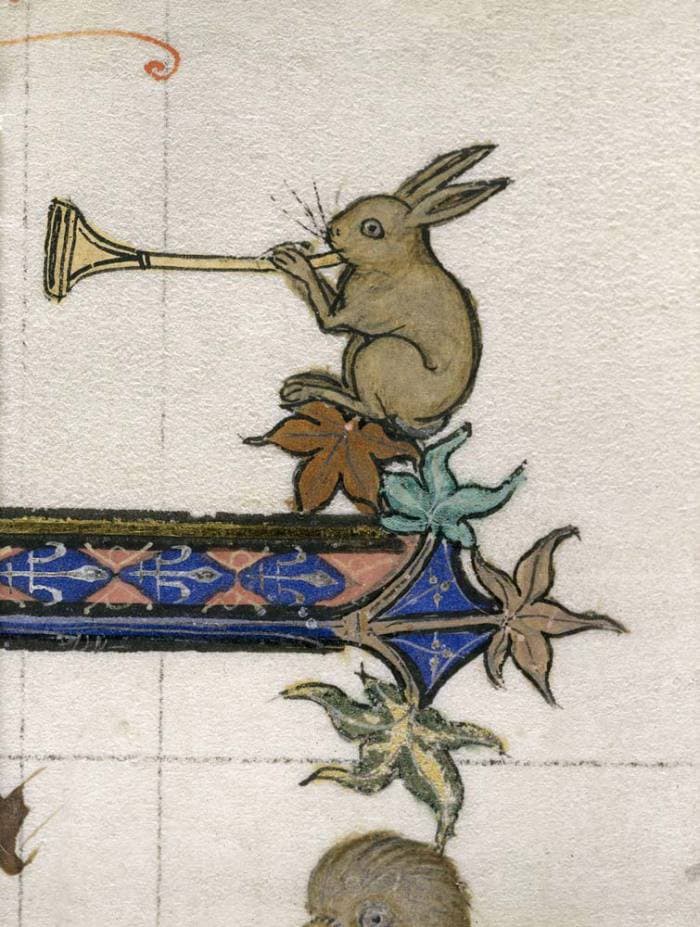Hidden in the decoration of medieval books are many different kinds of illustrations – some of them show people doing everyday things, others show animals doing everyday human things. And then, in some special ones, we see animals playing musical instruments. We’ve found instrument-playing bears, cats, dogs, rabbits, monkeys, cows, boars, donkeys, and all kinds of fantastic animal combinations.
Let’s start with one of the most common animals – the domestic cat. We have cats playing hurdy-gurdys, cats playing portative organs, cats playing the vielle, the bagpipes, the lute, all for our visual amusement.
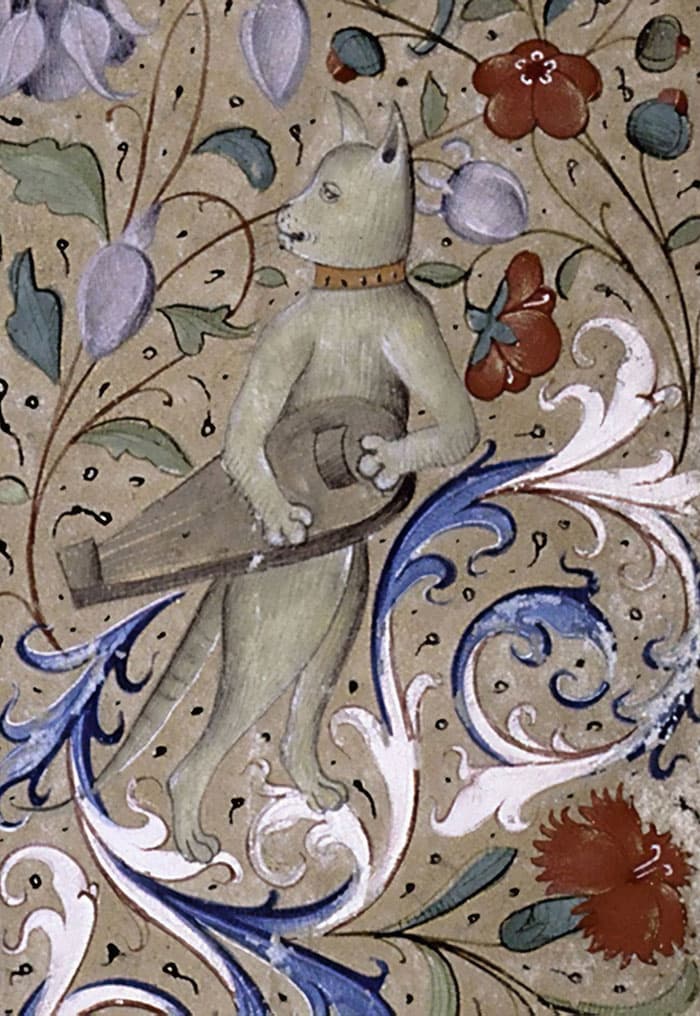
Cat Playing the Hurdy Gurdy
Frankie Armstrong / Paul James: Lady Diamond – New Jig (Nigel Eaton, hurdy-gurdy; Paul James, bagpipe)
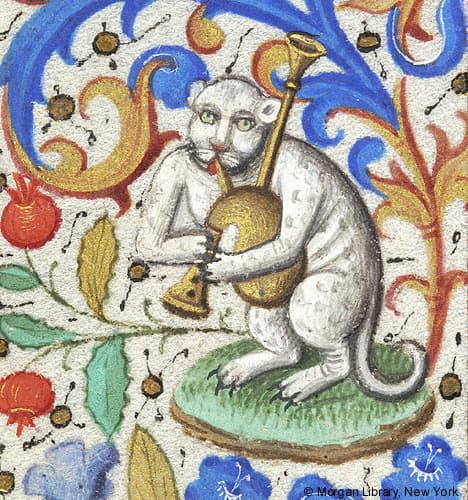
Cat playing the Bagpipe (Book of hours, ca. 1460 (New York, Morgan Library & Museum), MS M. 282, fol. 133v)
Cats and stringed instruments appear a bit more often – the vielle, a bowed string instrument that is an ancestor of our modern violin, is one instrument played by the musician cats. The instrument doesn’t have the sharp waist that the modern violin has and is more oval in shape and we can see it distinctly in these images.
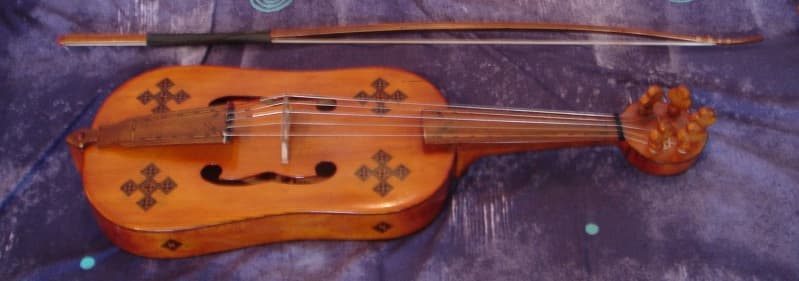
Vielle, reconstructed from a painting by Hans Memling (15th century)
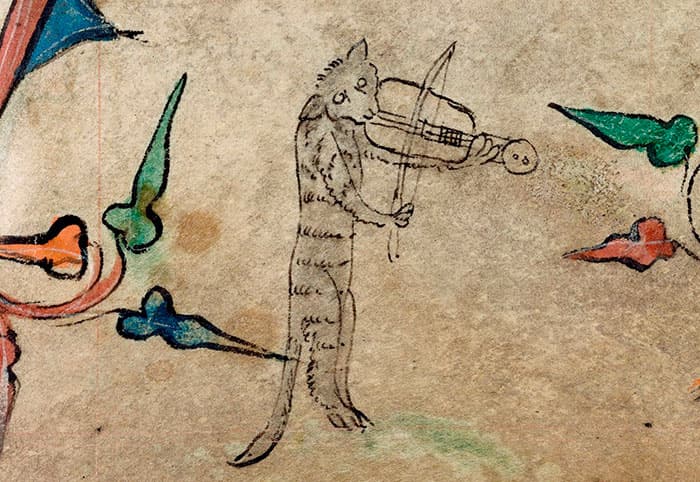
Cat and Vielle (Book of Hours, England (London), c. 1320 – c. 1330, Harley MS 6563, f. 40r)
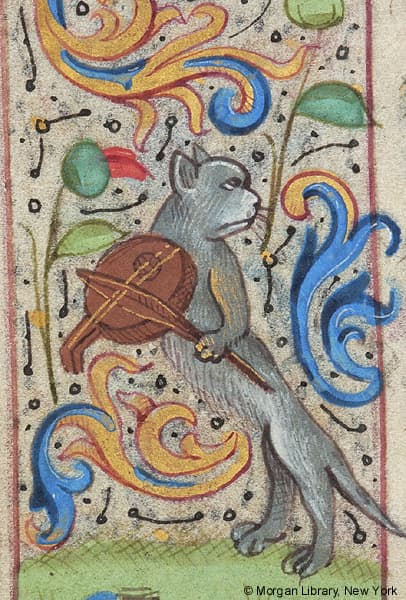
Cat and Vielle (Book of Hours, 1480–1500 (New York, Morgan Library & Museum), MS M.179, fol. 44v)
Oswald von Wolkenstein: Freu dich, du weltlich creatur (Liane Ehlich, flute; Baptiste Romain, vielle; Marc Lewon, vielle and cond.)
The portative organ, or the organetto, is an organ that is small enough to carry. It required two people to play it, one person at the back operating the bellows and another person in the front playing the keys.
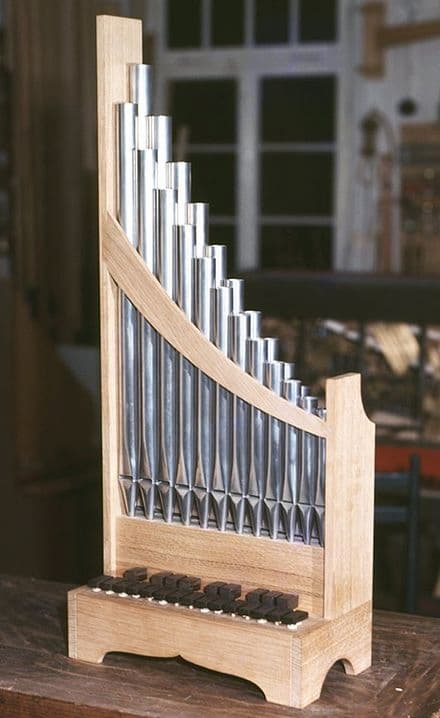
Portative organ, 1979 (reconstruction)
In our first pictures, we just have the cat at the keyboard:

Cat playing a portative organ
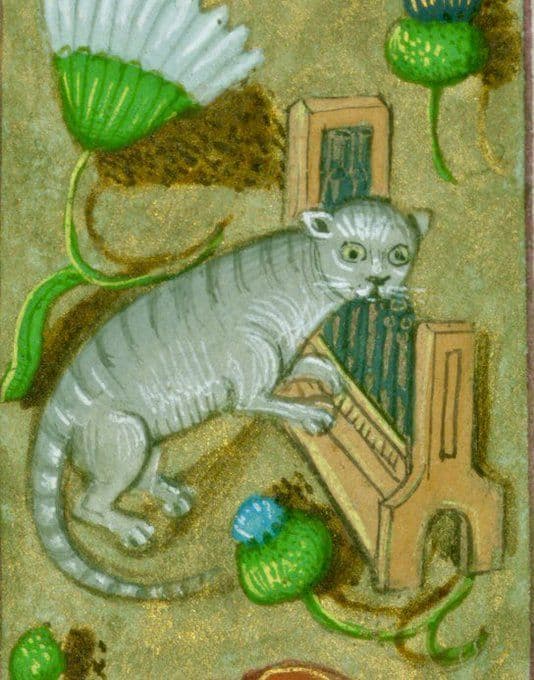
Cat playing a portative organ

Cat playing a portative organ (Prayerbook, 1480-1490 (Baltimore, Walters Art Museum), MS W.438, fol. 161v)
If we look above at the last image of the cat playing the portative organ from the Walters Art Museum, we can get an idea of how small these images might be. For this manuscript, the page is 11 cm wide x 15.6 cm high (4” x 6 1/8“) and the written surface is only 5.4 cm wide 9.2 cm high (2 1/8” x 3.5”) – our little cat musician is only about 1 cm (7/16”) high in the MS.
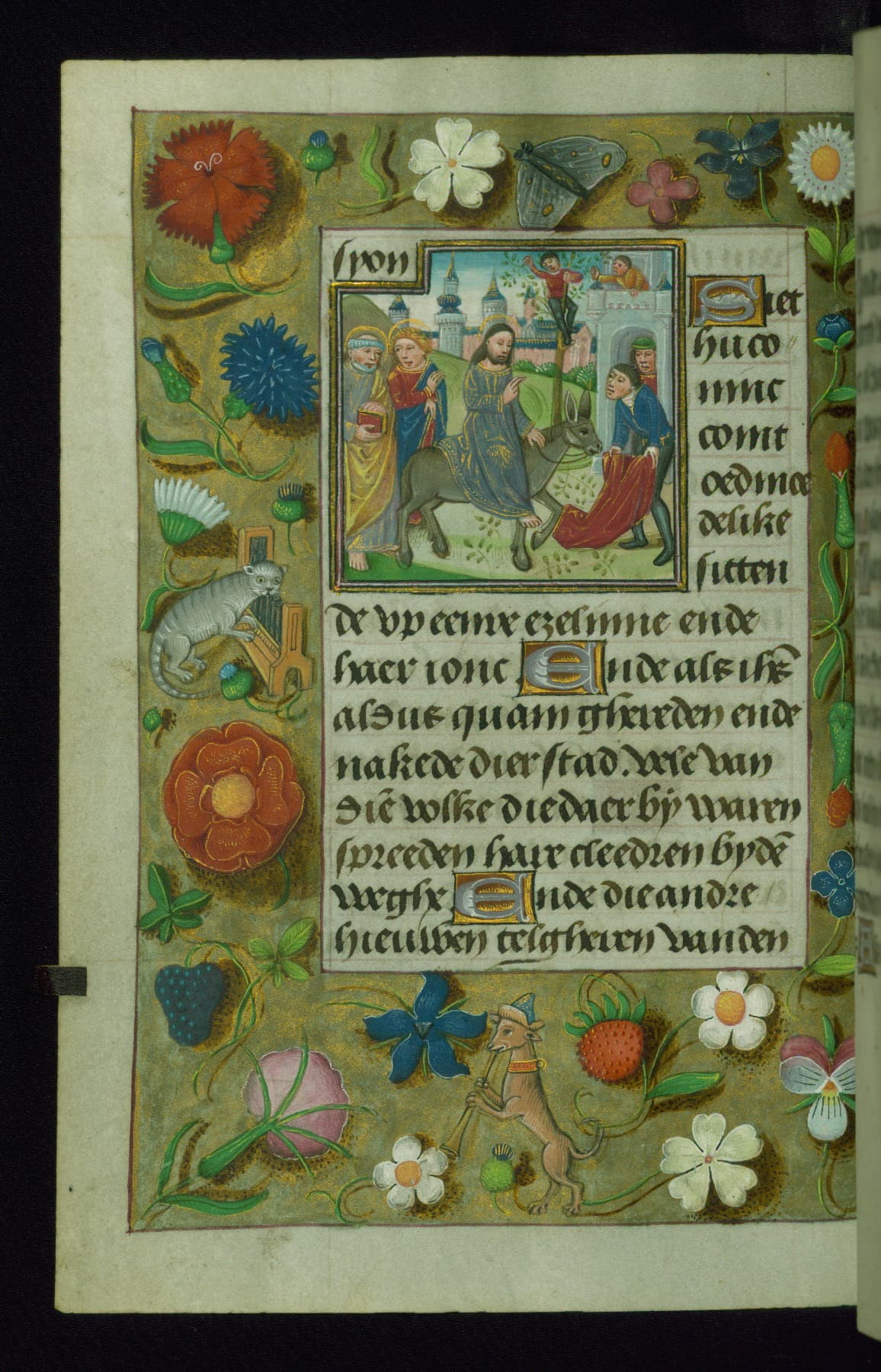
The entry of Christ into Jerusalem (Baltimore Walters Art Museum, MS. W.438, fol. 161v)
Paolo da Firenze: Po’ c’anno di mirar gli occhi mie stanchi (Elisabeth Seitz, psaltery; Guillermo Perez, portative organ)
In later columns, when we see what the rabbits are up to, we’ll see how they get helpers for the bellows.
Our last pictures show a cat playing the lute and a cat playing a square frame drum. The drum isn’t played with the hand, but with a separate beater.
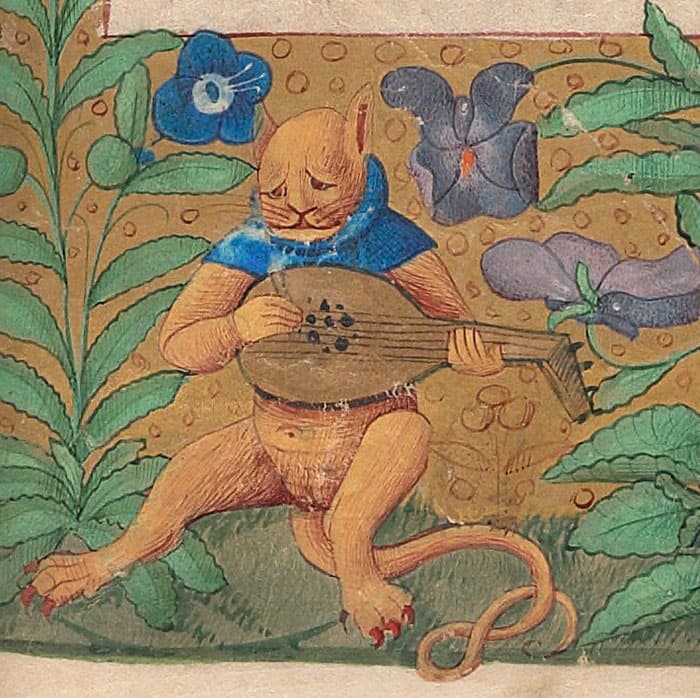
Cat playing the lute
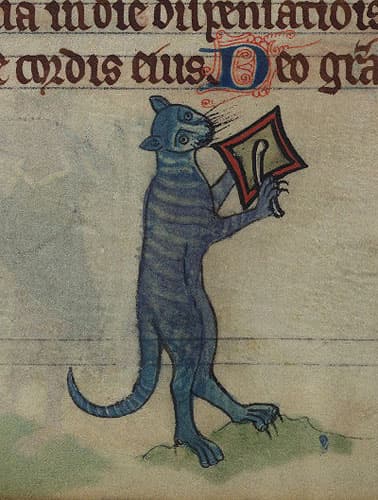
Cat playing a square frame drum (detail from a book of hours, ca. 1300
(Baltimore Walters Art Museum, MS. W.102, fol. 78v)
Guillaume de Machaut: De toutes flours (Leah Stuttard, lute and frame drum)
We’ll close with one later image of a cat at a musical play. On the 17th-century German playing card, the cat viol player summons the mouse to come and dance.
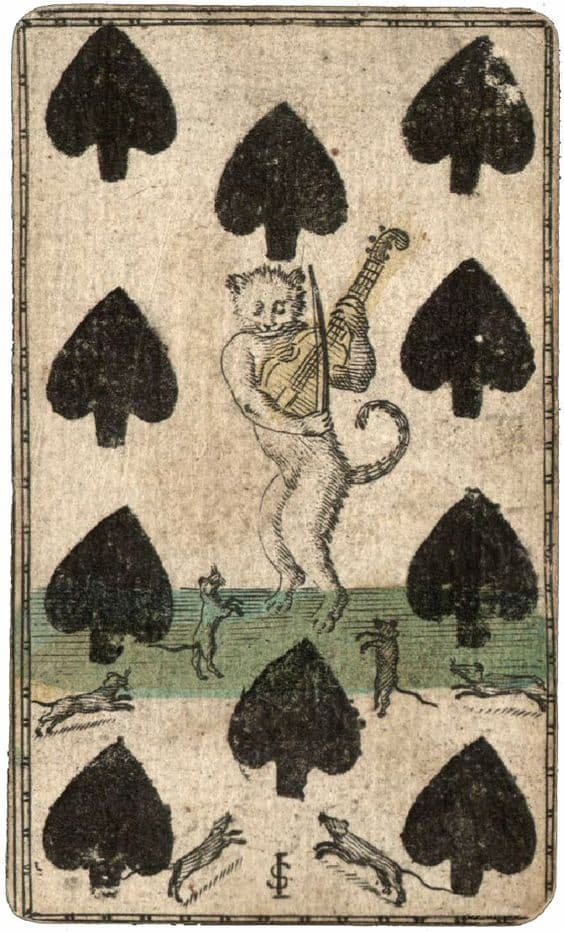
Cat playing a viol while the mice dance, 10 of piques (spades) playing card (Germany 1610-1650)
Illustrators chose a familiar domestic animal to add to the decoration of their manuscripts. When cats aren’t playing musical instruments, they also spend their manuscript time sorting out mice, attacking knights, riding around on people’s backs, and anything else that the illustrator could devise.
Next, we will look at illustrations of Rabbit musicians.
For more of the best in classical music, sign up to our E-Newsletter

